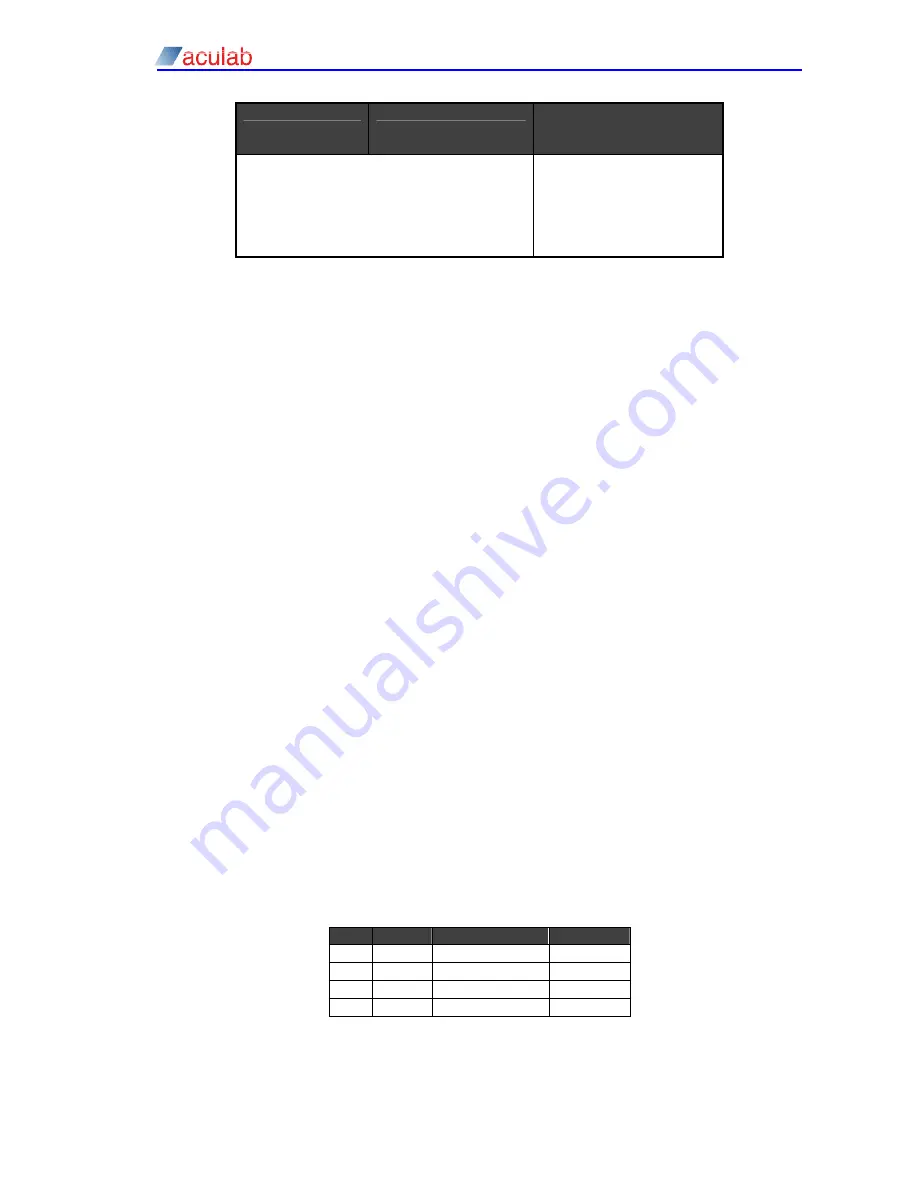
Prosody compact PCI installation guide
23
Clearance mm
Creepage mm
Voltage present on other
parts of the host or on
expansion cards.
For a host or other expansion card fitted in the
host, using or generating voltages
greater
than
300V (rms or dc), advice from a competent
telecommunications safety engineer must be
obtained before installation of the relevant
equipment.
Above 300V rms or dc
Clearance distances refer to the shortest distance between parts, measured through air. Creepage
distances refer to total distances measured across surfaces when installed in a normal office
environment. The creepage distances in parenthesis apply where the local environment within
the PC is subject to conductive pollution or dry non-conductive pollution that could become
conductive due to condensation.
If in doubt seek advice from a competent telecommunications safety engineer.
In order to maintain the host independent approval of the Prosody cPCI card, it is essential that,
when other expansion cards are introduced which use or generate a hazardous voltage, the
minimum creepage and clearances specified above are also maintained. A hazardous voltage is
one that exceeds 42.4V ac peak or 60V dc. If you have any doubt, seek advice from a competent
engineer before installing other adapters into the host equipment.
Failure to install the Prosody cPCI card in accordance with these instructions will invalidate the
Approval.
75 ohm Line Interface
Each network port on the card carries one 30-channel service connection. For 75 ohm
characteristic impedance coaxial cables connections, an RJ45 to BNC adapter is required. Each
adapter contains a pair of BNC coaxial connections, one for the transmit cable and one for the
receive cable.
75 Ohm Network Connection
The connection of the network input and output ports on the E1 card to the network termination
port (NTP) must be via coaxial cables with a nominal impedance of 75 ohms terminated with a
75 ohm BNC plug.
Note
There may be maximum cable lengths imposed by the PTO.
The cable connected to the input port on the E1 card (the black BNC) must be connected to the
output of the NTP and the cable connected to the output port (the white BNC connector) must
be connected to the input of the NTP.
The identification of the input and output of the network termination port is the responsibility of
installation personnel.
120 Ohm Line Interface
Each network port on the card carries one 30-channel service connection via a screened twisted
pair cable of 120 ohm characteristic impedance. There is one transmit pair and one receive pair.
Pin
Signal
Function
Direction
4 LTT Transmit
(tip) output
5 LTR Transmit
(ring) output
1 LRT Receive
(tip) input
2 LRR Receive
(ring) input
The cable and plug must be shielded types to ensure EMC compliance.












































